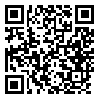Volume 31, Issue 12 (3-2024)
JSSU 2024, 31(12): 7363-7380 |
Back to browse issues page
Download citation:
BibTeX | RIS | EndNote | Medlars | ProCite | Reference Manager | RefWorks
Send citation to:



BibTeX | RIS | EndNote | Medlars | ProCite | Reference Manager | RefWorks
Send citation to:
Dehghani Shoraki S A, Hessam S, Biabani Khankahdani R. Designing the Empowerment Model of Patients Hospitalized in the Hospitals Affiliated to Shahid Sadoughi University of Medical Sciences, Yazd. JSSU 2024; 31 (12) :7363-7380
URL: http://jssu.ssu.ac.ir/article-1-6048-en.html
URL: http://jssu.ssu.ac.ir/article-1-6048-en.html
Abstract: (1133 Views)
Introduction: Identifying factors that influence the patient experience are critical to implementing strategies that support patient engagement and ultimately achieve better health outcomes. The present study was conducted with the aim of presenting a model of empowerment of hospitalized patients.
Methods: The current research was a qualitative-quantitative study that was cross-sectional by stratified sampling method with proper allocation in hospitals affiliated to Shahid Sadoughi University of Medical Sciences, Yazd, Iran, on 230 heads, managers, matrons, supervisors, heads of clinical and paraclinical departments and hospital headquarters units, nurses and doctors were done. The data were collected using the demographic information tool and the questionnaire made by the researcher to design a model of empowering patients admitted to the hospital. Determining the ability of the designed model by fitting the data was done with the confirmatory factor analysis method. Data were analyzed by SPSS version 16 software and Amos.v 24 software.
Results: Questionnaire for designing a model of empowering patients in the hospital has 8 areas and 61 items or components. In the present study, the Chi-square ratio to the degree of freedom was significant (p<0.001), which indicated the appropriate fit of the model. The value of the GFI index was estimated at 0.93, which indicated that the model fits well. The values of GFI and AGFI for the empowerment model of hospitalized patients were higher than 0.8.
Conclusion: Organizations and medical institutions have the opportunity to utilize this model to empower patients. The universities of medical sciences and affiliated hospitals should create an enabling environment for enhancing patient empowerment.
Methods: The current research was a qualitative-quantitative study that was cross-sectional by stratified sampling method with proper allocation in hospitals affiliated to Shahid Sadoughi University of Medical Sciences, Yazd, Iran, on 230 heads, managers, matrons, supervisors, heads of clinical and paraclinical departments and hospital headquarters units, nurses and doctors were done. The data were collected using the demographic information tool and the questionnaire made by the researcher to design a model of empowering patients admitted to the hospital. Determining the ability of the designed model by fitting the data was done with the confirmatory factor analysis method. Data were analyzed by SPSS version 16 software and Amos.v 24 software.
Results: Questionnaire for designing a model of empowering patients in the hospital has 8 areas and 61 items or components. In the present study, the Chi-square ratio to the degree of freedom was significant (p<0.001), which indicated the appropriate fit of the model. The value of the GFI index was estimated at 0.93, which indicated that the model fits well. The values of GFI and AGFI for the empowerment model of hospitalized patients were higher than 0.8.
Conclusion: Organizations and medical institutions have the opportunity to utilize this model to empower patients. The universities of medical sciences and affiliated hospitals should create an enabling environment for enhancing patient empowerment.
Type of Study: Original article |
Subject:
other
Received: 2023/07/16 | Accepted: 2023/11/26 | Published: 2024/03/5
Received: 2023/07/16 | Accepted: 2023/11/26 | Published: 2024/03/5
Send email to the article author
| Rights and permissions | |
 |
This work is licensed under a Creative Commons Attribution-NonCommercial 4.0 International License. |







